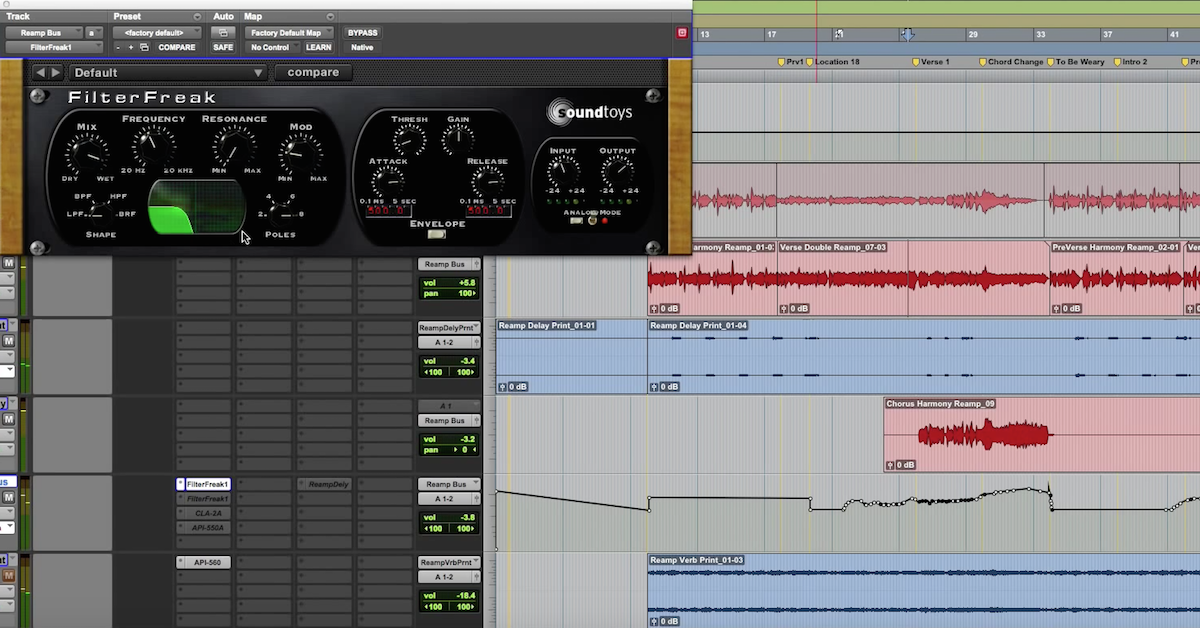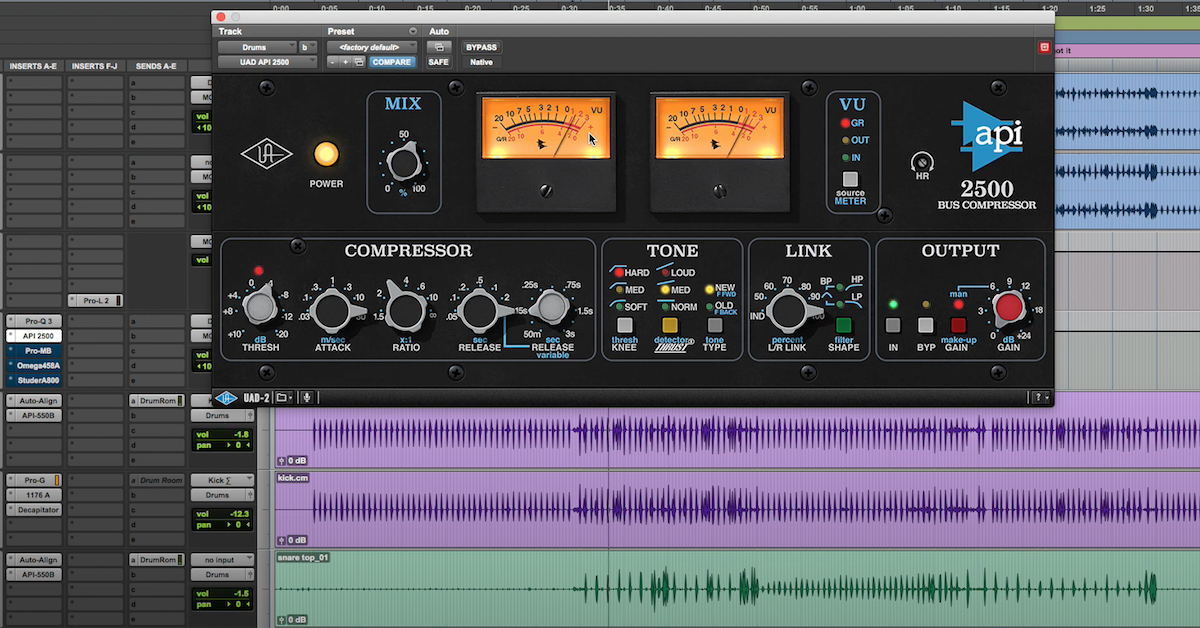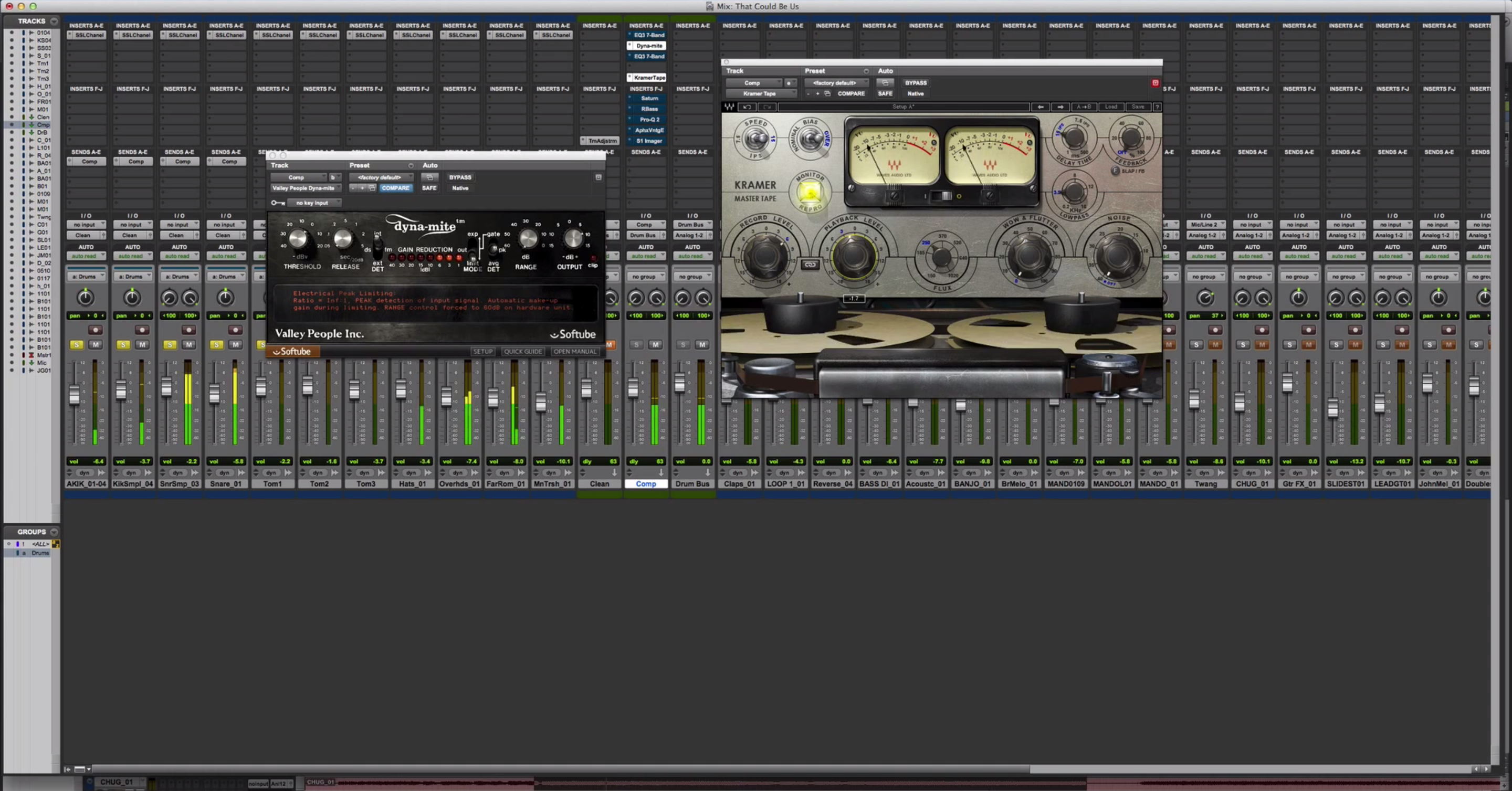4 Tips for Preventing Over-Processing During Mixing
Article Content
Over-processing is a problem that most engineers seem to face at one point or another in their careers.
As we’re all discovering new techniques and learning more about our tools on a daily basis, there’s the potential to fall into the habit of doing more than is necessary just for the sake of feeling like we’re doing “enough”, and actually giving our customers their money’s worth.
The ironic truth of the matter is, an over-processed, somewhat unnatural sounding signal will usually stick out more to a listener than a totally raw and untouched one!
In today’s article, we’re taking a look at four ways you can go about slowing down your trigger-happy tendencies during mixing and make sure all your decisions are the right ones.
1. Start With A Good Point Of Reference
Ever spent hours mixing a song to a point where you think it sounds really punchy, bright, clear, wide and deep, only to compare it side by side with a pro radio mix and realize it’s actually none of the above?
Sure, there’s a good chance your mix sounds quite a bit better than the raw track you were sent to begin with, but that’s not the standard by which it will be judged!
Unless you’re a seasoned engineer with an accurate point of reference for what a good mix should sound like already engraved in your head at all times, you might want to consider starting each day in the studio by listening to some of your favorite productions as a kind of “ear re-calibration”.
Depending on the genre of music I’m going to be working on in a given day, as I’m setting up my mixing session, I’ll usually listen through a couple of pro mixes in the background (often similar reference songs which I’ve been given by the artist) to get me in the right vibe, to begin with, and somewhat prevent myself from straying too far from the artist’s desired sonic end-goal.
Remember, the goal here isn’t to try and copy your favorite mixes — as that process will probably just send you down a whole different rabbit hole of its own — but rather to give yourself a realistic idea of how far the raw tracks in front of you are from being “radio-ready”.
2. Monitor at a Lower Volume
A bad engineering habit I still struggle with on a daily basis, despite knowing well and clear the negative effect it has on my mixes, is monitoring too LOUD.
Let’s face it … LOUD IS FUN! Feeling the deep “thud” of the kick drum rattle your rib cage every time it hits is inspiring. Hearing the guitar solo rip through the center of your mix as if you were standing in the front row at a rock concert makes you want to jump out of your chair and start playing the air guitar. Feeling the bass starting to induce a bowel movement is… well… somewhat disturbing…? But I digress…
As awesome as it may feel to mix at higher volumes, it’s also a great way to trick yourself into thinking everything sounds better than it really does.
Everything sounds impressive when it’s cranked up to eleven. The real skill lies in getting your stuff to sound good at super-low whisper-volumes.
I can’t tell you how many times I’ve spent hours rocking a mix at unnecessarily loud levels thinking I’m the king of the world, only to listen back the next morning at a more conservative volume and end up saying “what on earth was I thinking???”.
Do yourself a big favor — Turn down your monitoring, and work hard to try and keep it that way throughout the entire day. The results will most likely speak for themselves, not to mention the fact that your ears will thank you for it in the long run!
3. Start by Making Broad Strokes, Leave the Detail Work for Later
Your first, faders-up listen of a fresh track that’s just been sent to you is extremely important, as any major issues with the raw material will usually jump out and catch your attention immediately. These initial, gut reactions are most likely the same things that’ll jump out to the average listener, and should, therefore, be your top priority whilst mixing the song.
As engineers, we love to dive into the deep end and obsess over complicated detail work that barely accounts for 5% of the overall mix for hours and hours on end. In doing so, our ears can become numb to much more pressing issues that were blatant, to begin with, as if almost magically compensating for their shortcomings and starting to accept them as “normal” over time.
A much better approach is to spend your precious first hour or so making broad tonal and dynamic changes to correct issues that really stood out during your first listen. Was the vocal difficult to understand, getting a bit drowned out by the rest of the instrumental arrangement? Maybe quickly throw a broad 8 kHz shelving boost and a compressor with 5-10 dB of gain reduction on there to give it more clarity and presence in the mix from the get-go. Were the stereo electric guitars hurting your ears a little when they came in during the chorus? Maybe dig out some of their 2-4 kHz upper-midrange to get them a bit more under control, open up some space for the vocals to poke through a bit more, and prevent your ears from fatiguing too early on in the day, etc.
I think you get the idea … Always start by tackling the big issues that actually have an effect on the listenability of the song. Your fancy sidechaining and automation tricks can wait until later!
4. Take Frequent Breaks & Reset Your Ears
Ear fatigue is a huge factor when spending long hours listening to the same song over and over again, and one of the primary causes of wasted time in the studio.
Our ears, just like every other part of our body, get tired after prolonged use. When tired, or “fatigued”, they become particularly sensitive to high midrange and treble frequencies, even to the point of being unable to accurately pinpoint individual frequencies or tell whether problems we think we are hearing are really there at all!
As obvious as it may seem, trying to do critical listening and mixing work under such circumstances is, simply put: unproductive. While you think you’re making some really important EQ moves that will drastically improve the quality of the mix, what you’re really doing is just compensating for the skewed frequency response of your worn-out ears and trying to make YOUR personal listening experience a little more comfortable given their current sorry-state. (A little dramatic, I know. But true nonetheless!)
Another important thing to consider on the topic of “resetting your ears” is the fact that we often like spending long durations working on looped, individual chunks of the song in isolation from the overall picture.
The issue here is the fact that although a drastic EQ move or arrangement change you’re making may sound cool in the context of the current section you’re working on, there’s a good chance it won’t actually fit when transitioned into from the previous section of the song!
For this very reason, whenever doing something new and “drastic” in a mix, I always try and listen from the very top to see how well it fits in with the overall vision, if at all!
To sum up: Try and make it a habit of giving your ears a 10-15 minute break to take a breath and gain some fresh perspective once every hour or two. You’ll be surprised at how revealing your first listen can be after returning from a break, and how it can instantly allow you to notice serious issues that were being “masked” by the fatigue.
Conclusion
Personally speaking, over-processing has been my biggest struggle as an engineer throughout my entire career.
We tend to forget that a lot of our favorite classic productions from the 60s and 70s were mixed on much simpler setups than we have at our disposal today, and that the physical limitations of the gear those engineers were using pretty much eliminated the possibility of over-processing from the get-go anyway!
Just because you own hundreds of plugins doesn’t mean you should try and use every single one of them on every single instrument. Learn to listen first, do second.
That’s the key!





